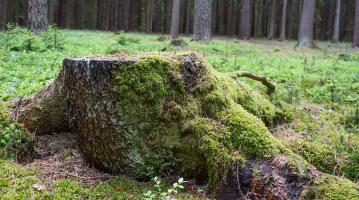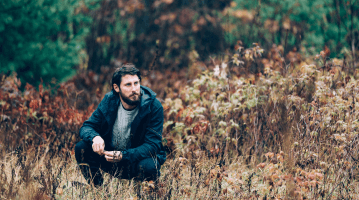How can we preserve biodiversity?
Biodiversity performs some truly invaluable services. From the food we eat and the air we breathe to the medicines that heal us, biodiversity is the invisible thread holding our lives together. Its loss should therefore alarm us in more ways than one. Every species that disappears is a sign of an ecosystem in danger. Governments, associations, politicians and the public all have a role to play in preserving it!
Why is it so important to preserve plant biodiversity?
Biodiversity is a valuable indicator of the health of the ecosystems on which we depend. With its depletion and the loss of thousands of species every year, we’re increasing the risk of seeing our living conditions deteriorate irreparably. A healthy ecosystem is a solid network that’s capable of providing invaluable services, such as the food we eat, the air we breathe, the water we drink and the medicines that heal us.
To give you just two examples:
- Oceans produce 50% of the oxygen we breathe and absorb 30% of the CO2 in the atmosphere
- 70% of crops depend on animal pollination
(Source: biodiversité.gouv.fr)
Biodiversity also protects us from the natural hazards that are exacerbated by climate change (floods, wildfires, storms, droughts, epidemics, etc.) and can even compensate, to a certain extent, for the damage we do to the environment, such as soil, air and water pollution.
Finally, biodiversity is an inexhaustible source of knowledge, wonder and entertainment.
Humans are just one species of many. We all live together on the same planet with limited resources. Ecosystems are based on fragile balances. Biodiversity loss leads to upheaval on a very large scale, the immediate effects of which are only beginning to come to light, but will have consequences for generations to come if we don’t redouble our efforts to protect, preserve and restore it wherever possible.
Ways to preserve biodiversity
Preserving biodiversity is a global challenge. On every level, from international bodies to local authorities, all stakeholders – whether public, private or voluntary – have a role to play in this international effort that will determine our collective futures.
Protection programmes
The European Union set up the Natura 2000 network over 30 years ago, which now covers 18% of the EU’s land mass and 9% of its seas. 2,000 species and habitats are under enhanced protection because of this scheme, making it the largest continent-wide network of protected natural spaces in the world.
The EU’s biodiversity strategy applies to all Member States. In preparation for COP15 in Montreal in late 2022, which brought together all signatories to the United Nations’ Convention on Biological Diversity, the EU adopted a strategy for 2030 based on a number of key objectives:
- legally protecting a minimum of 30% of the EU’s land and sea areas (forests, wetlands, peatlands, grasslands and coastal ecosystems), up from 15% originally;
- turning 10% of the EU’s land and sea areas into Strictly Protected Areas, including primary and ancient forests and other carbon-rich ecosystems;
- urgently revising the EU Pollinators initiative to establish a new framework for monitoring bees and other pollinators across the EU;
- creating a European platform for urban greening with binding targets, including minimum quotas of green roofs, support for urban agriculture, banning chemical pesticides, for example;
- allocating at least 25% of agricultural land to organic farming;
- reducing the use of the most dangerous chemical pesticides by 50%, and banning the use of glyphosate-based herbicides after December 2022.
Closer to home for our Foundation, France is also in the process of drawing up its biodiversity strategy for 2030, which will coordinate all related national plans and respond to five major goals:
- protected, restored and resilient ecosystems;
- sustainably and fairly used biodiversity resources and services;
- warning, training and mobilising society;
- cross-cutting, knowledge-based and results-focussed leadership;
- biodiversity policy funding.
Plenty of conservation programmes already exist, from national and regional parks to nature reserves, UNESCO biosphere reserves and more. But while the effectiveness of these programmes no longer needs to be demonstrated, it’s clear that protecting biodiversity needs all the active forces, foundations, associations and citizen movements to pull together as one, and must go beyond the framework of habitat conservation alone. The strategies currently being drawn up take all the threats to biodiversity into account and call into question the ways we consume, produce, move and live. It’s in this context that Klorane Botanical Foundation is supporting programmes as diverse as the fight against desertification in the Sahel region, the reintroduction of endangered plant species back into their natural environments, raising awareness in schools, and the transition to sustainable agroforestry in the Amazon. Because biodiversity needs us to act on every level.
Everyday protection
Everyone can do their bit to preserve biodiversity.
There’s no such thing as a small or insignificant gesture when it comes to saving living things!
Discover what you can do to help!

Causes and consequences of deforestation
Find out more about the threats to biodiversity and how to preserve it

Human impacts on biodiversity
Find out more about the threats to biodiversity and how to preserve it
